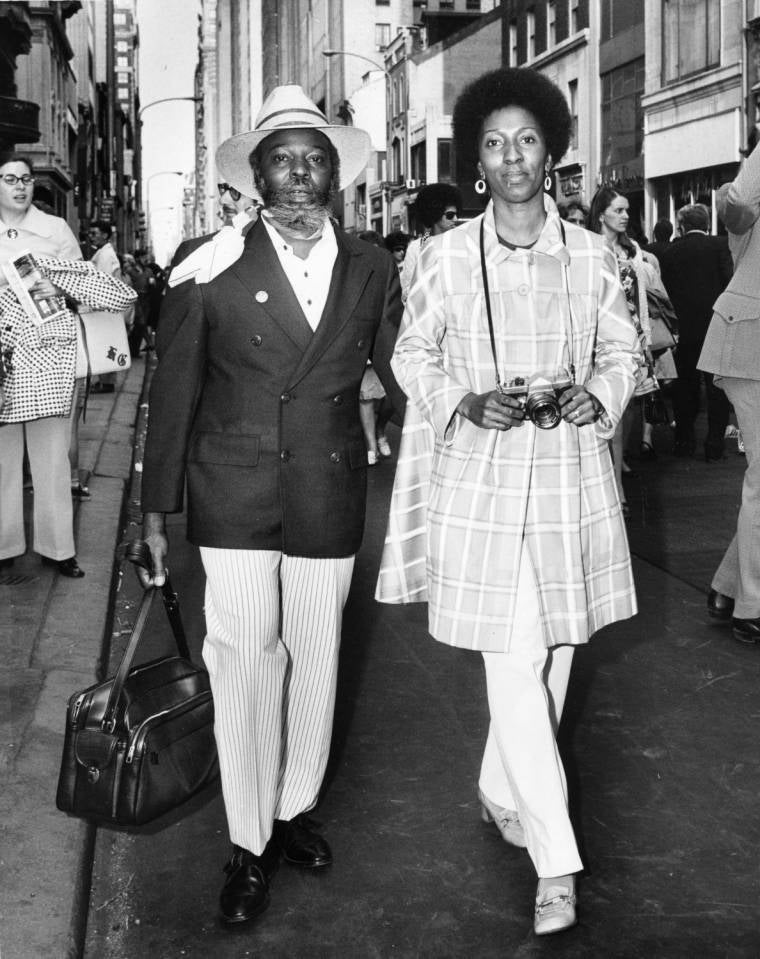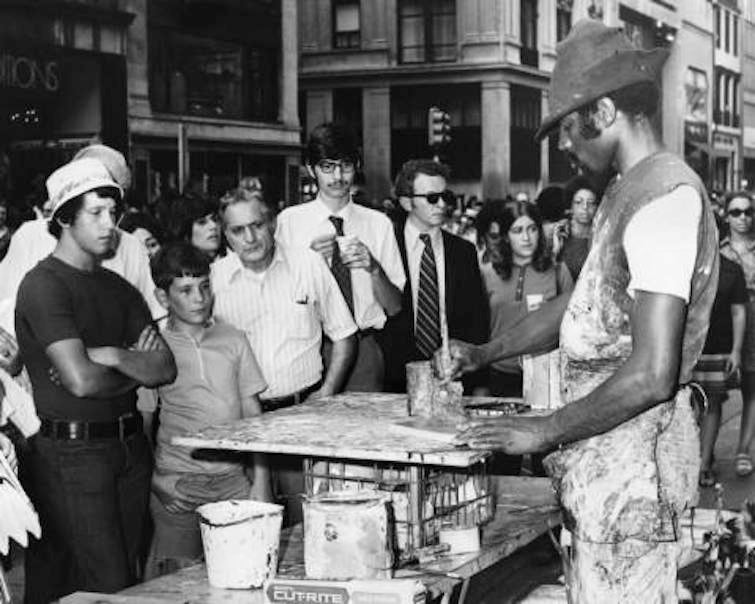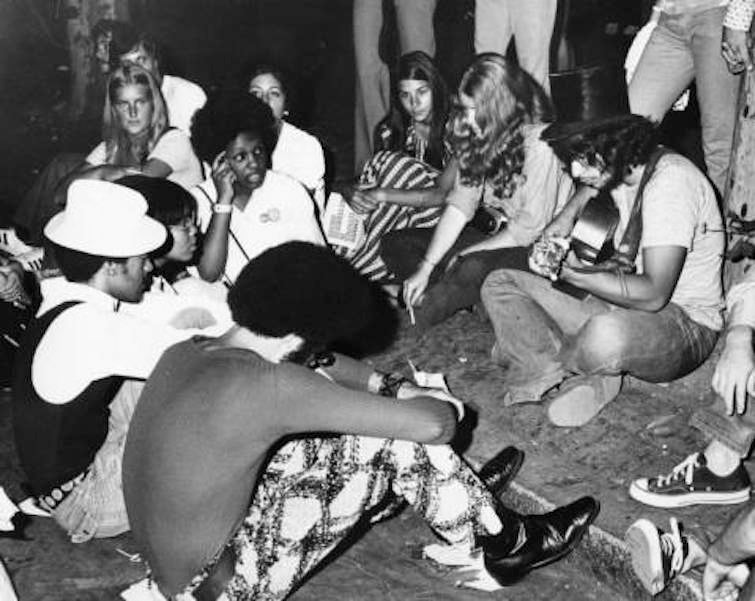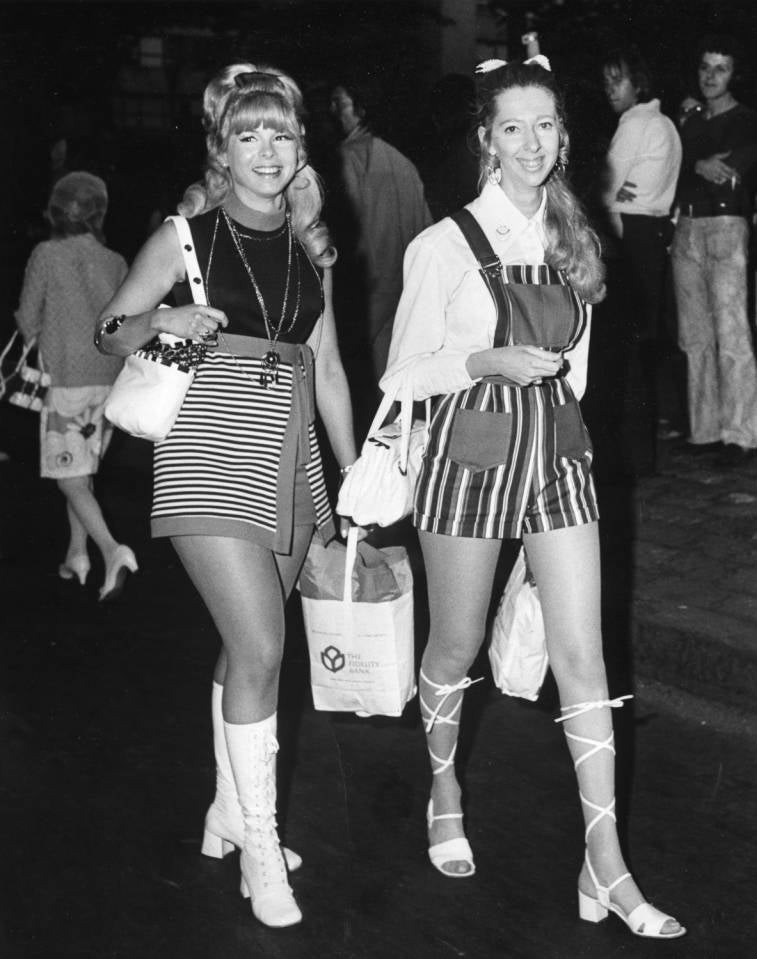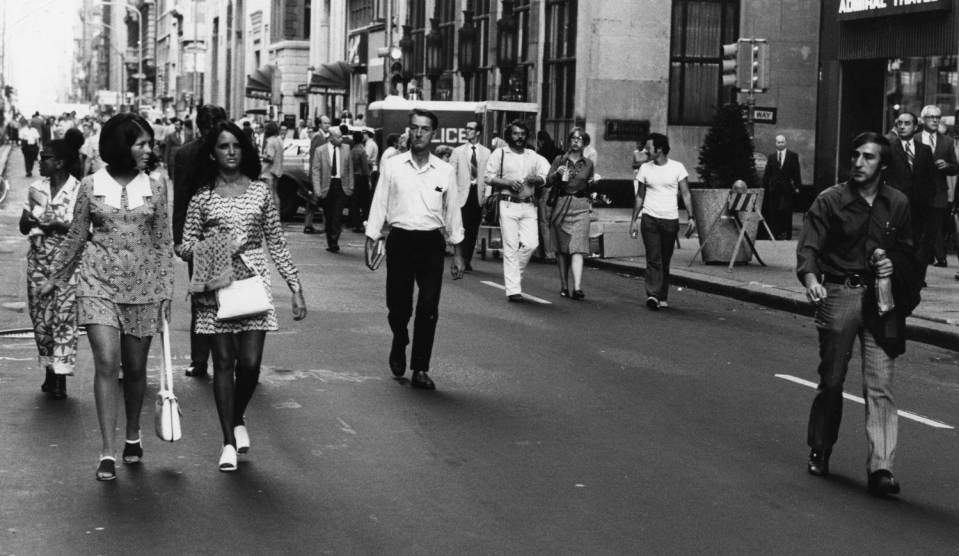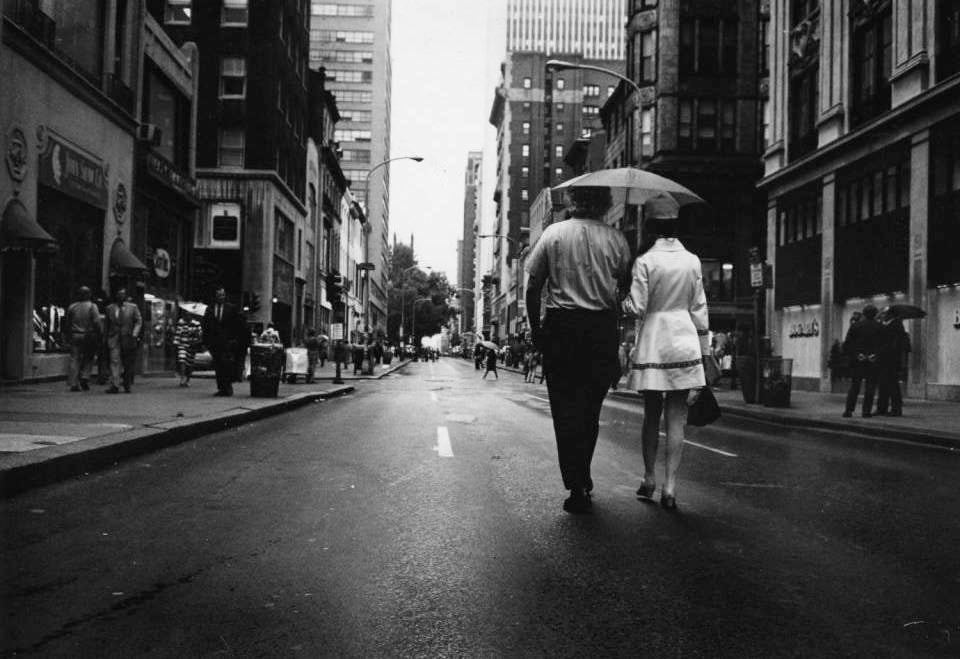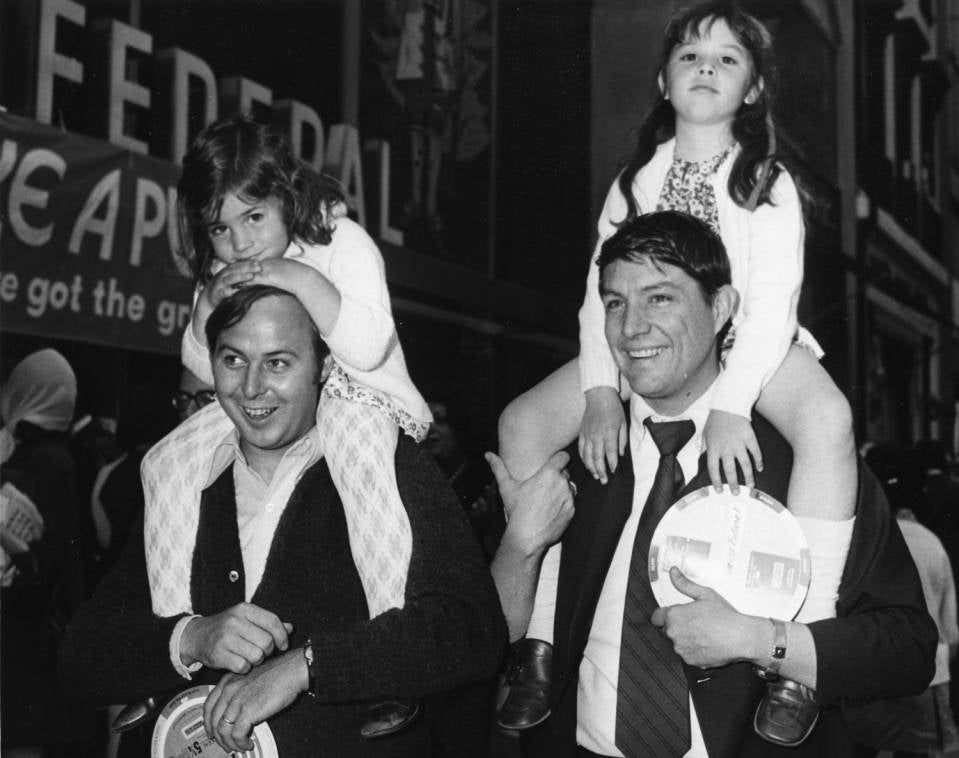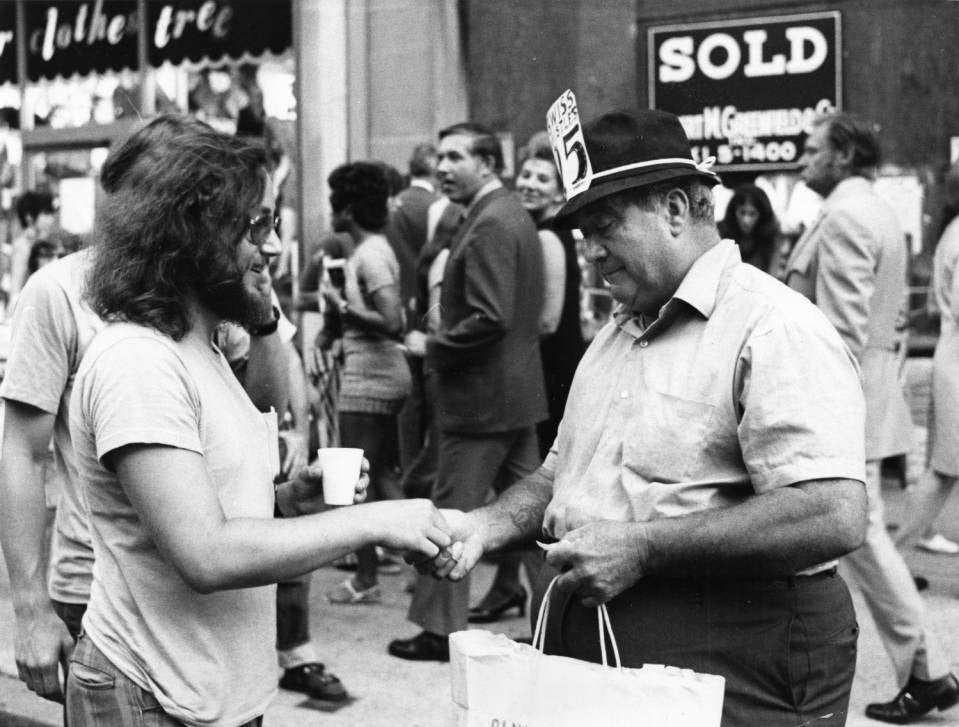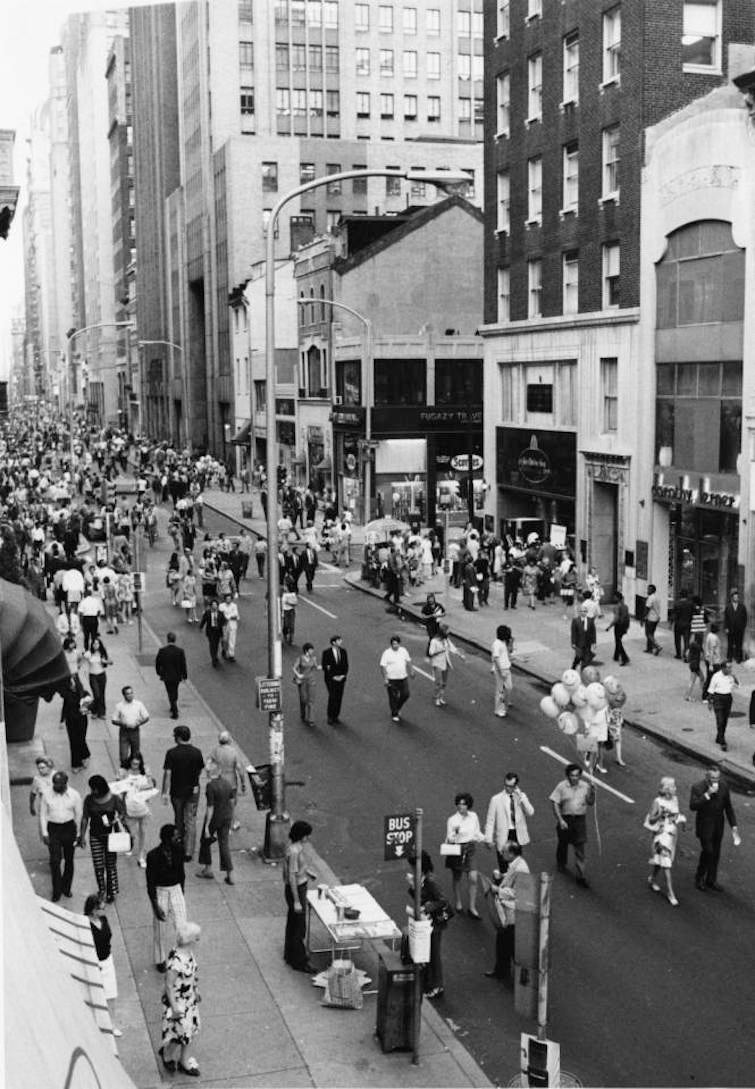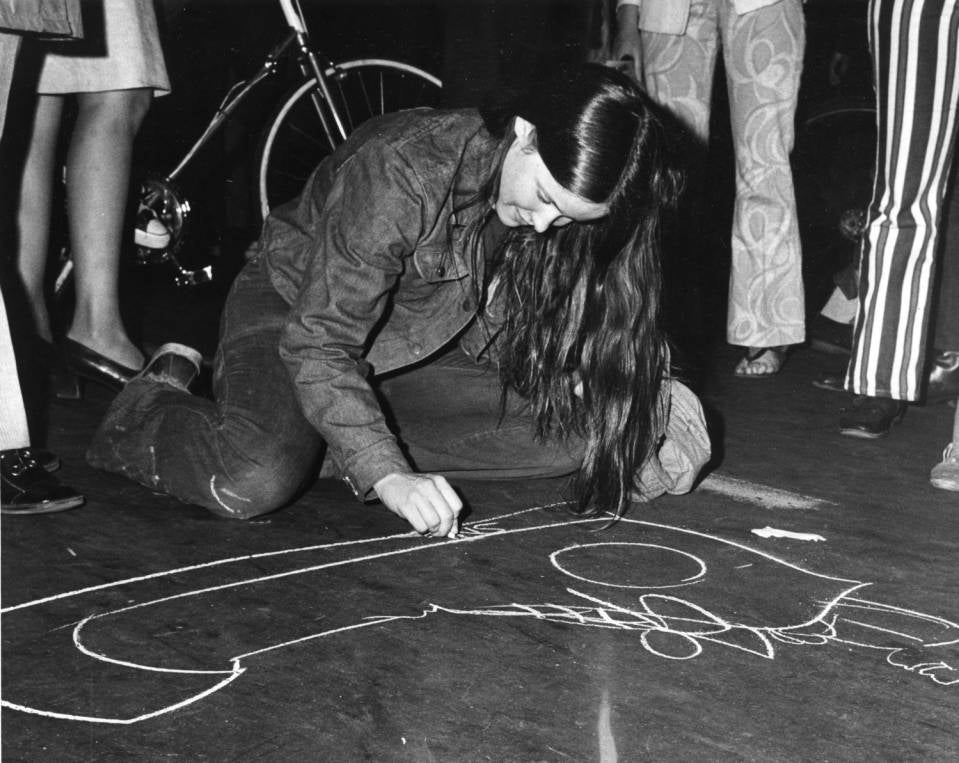Back to the Future: Open Streets in Philly, 1971
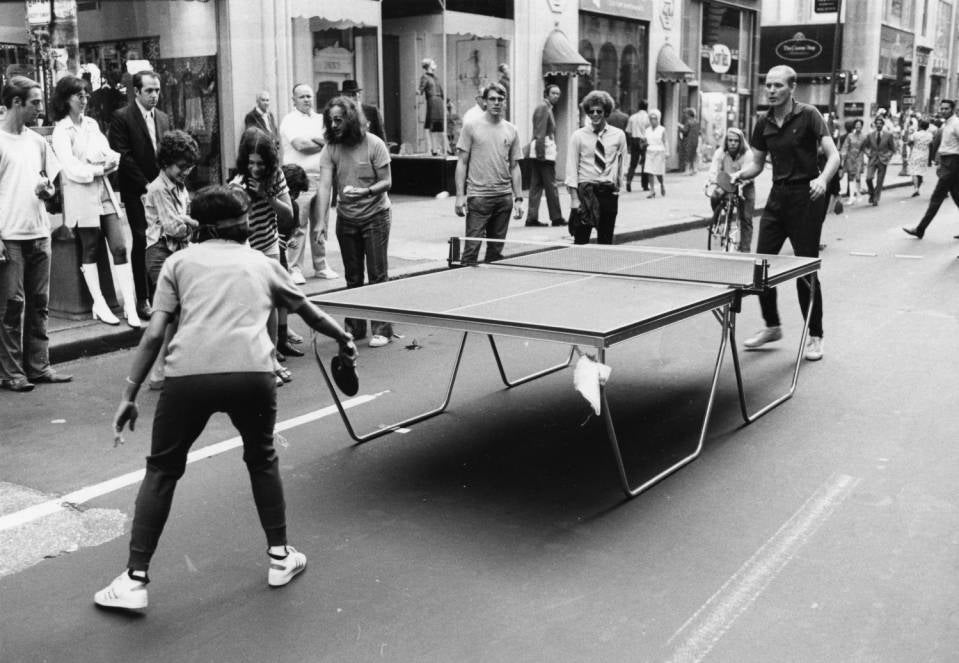
During a segment on Marty Moss-Coane’s Radio Times show in October about the Open Streets Philly campaign*, a woman called in to remind listeners that Philly had done a few open streets events in Center City during the early 70’s that were quite popular.
The caller’s husband had organized the Walk on Walnut Street events in 1971, she explained, which closed Walnut Street to cars between Broad and 20th Streets, and which she remembered as being very well-attended.
Nobody on the panel had heard of this, and we hadn’t either. Online searches revealed some amazing photographs of the events from the Philadelphia Evening Bulletin collection archived at Temple University Library. (Click through the slideshows below for a look.)
We had to know more, so we followed up with the caller, and she put us in touch with her husband, Gary Levitt, who now works in Boca Raton, Florida.
In 1971, Levitt was a principal with now-defunct Philly ad agency Sonder, Levitt, and Sagorsky, and he had recently returned from a trip to Copenhagen with his wife Barbara. While there, he became inspired by the city’s famous walking streets and car-free plazas like Strøget, and he wanted to bring the concept back to Philly.
The agency, whose office overlooked Walnut Street, came up with the concept of the Walk on Walnut Street—a car-free promenade on Walnut from Broad Street to 20th on a Wednesday evening after work. They selected a date, May 21, 1971, and in the weeks leading up to the event, they published a weekly newsletter to get the word out, which they carried around to Walnut Street businesses every Friday.
“We would go around encouraging individual retailers on Walnut to come up with something interesting to do on the sidewalk from 6-9pm, about three hours, during the week. They would do it, and then we would write about it in the newsletter.”
The firm also did a poster campaign to raise awareness over the two months leading up to the event. The poster featured a black and white image of “a diverse bunch of Center City folks” in the middle of Walnut Street, which the group got a permit to block off for the photo. It said “Take a Walk on Walnut Street” and most of the retailers put it in their windows, Levitt recalled.
Though skittish retailers were worried sick the day before the event that nobody would show up, he said, Walk on Walnut Street organizers lucked out with great weather, and thousands of people opted to hang around after work.
Levitt recalled watching from the firm’s office windows as “tens of thousands” of people began pouring onto Walnut and the side streets.
“We weren’t unsophisticated,” he said, “We certainly wanted to stack the odds in our favor, so we scheduled it for a time when people were leaving their offices. The street just filled up almost magically, within 15 to 20 minutes.”
The firm recruited some bands to perform for free on the streets (the Electric Factory was one of their advertising clients), restaurants extended their seating out on to the sidewalk, and there was some other light programming here and there. The main attraction though was the simple opportunity to stroll Walnut Street unencumbered by car traffic.
“The street was packed the whole evening, the whole way, and people were just having a good time,” Levitt recalled, “Nine o’clock came, and the street was still packed from Broad St to 20th, so I went and found Frank Rizzo, the Police Commissioner at the time, and said ‘Commissioner, look everybody’s having a good time. Can we let it go another hour?’ And I remember him very clearly looking at me with a disdain that only he could muster, and then telling the cops ‘clear the street.’”
Levitt and company pulled off three Walks on Walnut Street in total in 1971. The same year, the firm was approached by the Women’s Committee of the Philadelphia Museum of Art, who liked the buzz around the open streets events and wanted to organize some car-free street events on the Ben Franklin Parkway to draw foot traffic to the museums.
They pulled off the first event —Super Sunday, as it was dubbed—the same year, closing the stretch between Logan Circle and the Art Museum to cars. They did not get so lucky with the weather. The first one saw pouring rain, but Levitt said thousands of people still came out.
Super Sundays became much larger, more commercial events with lots of bands, but without so much outdoor programming that they would hurt museum traffic, which was the main purpose. They were held much less frequently, just once a year from 1971 to 1986 in the spring or fall.
Levitt was excited about the positive response (from some corners) to car-free open streets during the Papal visit, and he hopes to see Philly organize more car-free weekends next year.
“Cities need to function, but they are at their best when you get the cars out,” he said, “The Pope’s visit showed that. There were lots of inconveniences, but lots of people had a great time too.”
*Disclosure: Jon Geeting is one of the founders of the Open Streets PHL campaign.
Note: These archival photographs are from the George D. McDowell Philadelphia Evening Bulletin Collection, and used with the express permission of Temple University Libraries, Special Collections Research Center.
WHYY is your source for fact-based, in-depth journalism and information. As a nonprofit organization, we rely on financial support from readers like you. Please give today.




